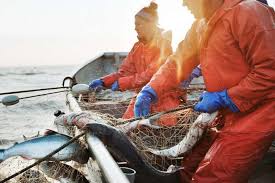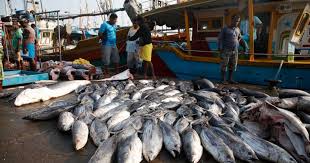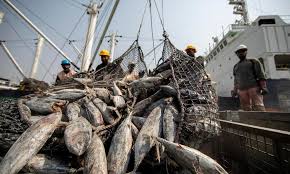In addition to identifying impacts and their sources, the fundamental aspect of an Environmental Impact Assessment (EIA) is the ability to propose mitigation measures for the identified potential impacts. This article introduces techniques for impact mitigation and presents various methods for mitigating and managing the environmental impacts of projects in fisheries.
Definition of Mitigation
Mitigation refers to actions taken to avoid or lessen the adverse effects of a proposed project activity. Mitigation may address ecological, economic, or socio-cultural effects. Project planning and implementation may include mitigation in several ways:
- Plan the location or timing of an activity to avoid affecting specific resources or sensitive areas.
- Include mitigation measures in project design to reduce impacts. For example, pipelines can be designed to allow for the passage of migratory fish species.
- Undertake a mitigation program concurrently with the project to alleviate impacts. A program inhibiting thawing of permafrost would be an example.
- Undertake a mitigation program after an activity to restore or replace lost or damaged resources in the affected area or elsewhere. For example, damaged freshwater fisheries can be mitigated by stocking fish or restoring river habitats.
Mitigation is a crucial component of the EIA process. It aims to prevent adverse impacts from occurring and to ensure that those which do occur are kept within acceptable limits. Opportunities for impact mitigation can arise throughout the project cycle.
Objectives of Mitigation in Fisheries

The objectives of mitigation are to:
- Find better alternatives and ways of implementing projects;
- Enhance the environmental and social benefits of a proposal;
- Avoid, minimize, or remedy adverse impacts;
- Ensure that residual adverse impacts are kept within acceptable levels.
Early links between the EIA and project design teams are essential for identifying mitigation opportunities and incorporating them into consideration of alternatives and design options. Mitigation is emphasized in the EIA process once the potential impacts of a proposal are reasonably well understood.
This typically occurs following impact identification and prediction. Recommended mitigation measures are an important part of the EIA report, and these measures are usually incorporated into the terms and conditions of project approval and implemented during the impact management stage.
Elements of Mitigation
The elements of mitigation are structured into a series of actions:
- Avoid adverse impacts as much as possible by implementing preventative measures;
- Minimize or reduce adverse impacts to the lowest practicable levels;
- Remedy or compensate for adverse residual impacts that are unavoidable and cannot be reduced further.
Key principles for applying mitigation measures include:
i. Giving preference to avoid and prevent measures;
ii. Considering feasible alternatives to the proposal and identifying the best practicable environmental option;
iii. Identifying customized measures to minimize each of the main impacts predicted;
iv. Ensuring mitigation measures are appropriate, environmentally sound, and cost-effective;
v. Using compensation or remedial measures as a last resort.
Good practice in mitigation within an EIA requires a relevant technical understanding of the issues and knowledge of which measures will work best under specific circumstances.
Methods Of Mitigation In Fisheries

Mitigation can be implemented using either structural or non-structural measures:
1. Structural Measures These include design or location changes, engineering modifications, and landscape or site treatments. These measures are well-established for projects such as dams, roads, and oil and gas exploration. In some cases, industry codes of good practice are available.
However, these codes need to be applied in light of the nature and severity of environmental impacts, for example, taking into account nearby protected areas, patterns of wildlife migration, or constraints imposed by natural hazards. Projects involving new technology may require non-standardized or even untried measures to mitigate adverse impacts, which should be carefully considered during impact management.
2. Non-structural Measures: These include economic incentives, legal, institutional, and policy instruments, as well as the provision of community services and capacity building. Non-structural measures can reinforce or supplement structural measures or address specific impacts. For example, many social, community, and health impacts are addressed by non-structural measures, and their use is becoming more frequent.
Generally, as project design becomes more detailed, opportunities for impact avoidance narrow, and the focus shifts to minimizing and compensating for unavoidable impacts. Nonetheless, opportunities for creative mitigation should be sought at all stages of the EIA and project planning.
Steps in Mitigation for Fisheries Projects

Mitigation follows a stepwise process, which includes the following:
Step One: Impact Avoidance
This is most effective when applied early in project planning. It can be achieved by:
- Avoiding projects or components that could result in adverse impacts.
- Avoiding areas that are environmentally sensitive, such as fish breeding grounds.
- Implementing preventative measures to stop adverse impacts from occurring, for example, releasing water from a reservoir to maintain a fisheries regime.
Step Two: Impact Minimization
Impact minimization is usually undertaken during impact identification and prediction, aiming to limit or reduce the degree, extent, magnitude, or duration of adverse impacts. It can be achieved by:
- Scaling down or relocating the proposal;
- Redesigning certain elements of the project;
- Implementing supplementary measures to manage the impacts.
Step Three: Impact Compensation
Impact compensation is typically applied to address residual adverse impacts that cannot be avoided or minimized. It can be achieved by:
- Rehabilitating the affected site or environment, for example, by enhancing fisheries habitats;
- Restoring the affected site or environment to its previous state or better, as often required for mine sites and forestry roads;
- Replacing lost resources at another location, for example, through wetland engineering to provide an equivalent area to that lost due to drainage or infill.
The application of mitigation measures should be technically sound, cost-effective, and suitable for the specific environmental, economic, and social context of the fisheries project.

